On October 26, 2023, the National Labor Relations Board (“the Board”) issued a final rule setting forth the standard by which the Board will determine if two or more employers are considered joint employers under the National Labor Relations Act (“NLRA”). Set to take effect on December 26, 2023, the new Rule will dramatically expand the scope of what is considered joint employment under the NLRA.
New Rule
Under the new Rule, “two or more employers of the same particular employees are joint employers of those employees if the employers share or codetermine those matters governing employees’ essential terms and conditions of employment.” See 29 C.F.R. §103.40(b). An employer “share[s] or codetermine[s] . . . essential terms and conditions of employment” if it has the authority to control, directly or indirectly, an employee’s essential terms and conditions of employment. Id.
There are seven categories of terms and conditions that will trigger application of the Rule, which include:
- Wages, benefits, and other compensation;
- Hours of work and scheduling;
- The assignment of duties to be performed;
- The supervision of the performance of duties;
- Work rules and directions governing the manner, means, and methods of the performance of duties and the grounds for discipline;
- The tenure of employment, including hiring and discharge; and
- Working conditions related to the safety and health of employees.
See 29 C.F.R. §103.40(d).
According to the Board, simply possessing the authority to control the essential terms and conditions of employment is sufficient to be considered a joint employer, regardless of whether such control is ever exercised. Likewise, merely possessing the power to indirectly control only one of the essential terms of employment is enough to establish joint employment, even when that power is not exercised directly.
The Board did not carve out any exceptions or narrow its application to preclude sectors and industries that rely upon indirect methods of employment. Therefore, entities like franchisors, staffing agencies, building and construction companies, and other similarly situated employers are likely to be impacted by the new Rule. Perhaps anticipating concerns by the aforementioned organizations, the Board noted that it was “mindful that applying the final rule will require sensitivity to industry-specific norms and practices” and that it would “take any relevant industry-specific context into consideration when considering whether an entity is a joint employer.” See 88 F.R. 73986.
Prior Rules
The NLRB’s definition of joint employment has changed significantly in recent years, often changing in conjunction with the political control of the Board. In 2015, the Board issued a decision in Browning-Ferris Industries of California, Inc., 362 NRLB 1599 (2015), which held that, like the new Rule, multiple organizations were joint employers based solely on the right of joint control. Prior to Browning-Ferris, joint employment required proof of actual control over essential employment terms and the level of control needed to be direct and immediate.
In 2020, following litigation and political changes to the Board, a subsequent rule was issued pursuant to which joint-employer status only existed when one company exercised substantial direct and immediate control over the essential terms and conditions of another organization’s employees. The new Rule, of course, significantly expands this former rule and returns to a Browning-Ferris version of joint employment.
Implications for Employers
The implications for employers found to be joint employers are significant. If deemed to be a joint employer, the employer can be held liable for unfair labor practices committed by the co-employer, such as the failure to pay minimum or overtime wages. The new Rule also requires a joint employer to collectively bargain with a union workforce.
Given these substantial implications, employers should assess their relationships with subcontractors, vendors, staffing agencies, and any other organization that could fall within the definition of joint employment. Modification of contractual terms should be considered to explicitly state that a business does not have the right to control any of the seven essential terms of conditions listed in the rule.
Next Steps
The new Rule will not go into effect until December 26, 2023. In the meantime, is highly likely that the new Rule will be challenged on multiple fronts. Sen. Bill Cassidy of Louisiana and Sen. Joe Manchin of West Virginia have already announced that they will introduce a resolution under the Congressional Review Act to overturn the Rule. The U.S. Chamber of Commerce has indicated that it is examining potential litigation to challenge the new Rule.
Lockaby PLLC will continue to monitor the status of the new Rule and any legal challenges and provide updates to employers on how best to navigate this new regulatory framework.

